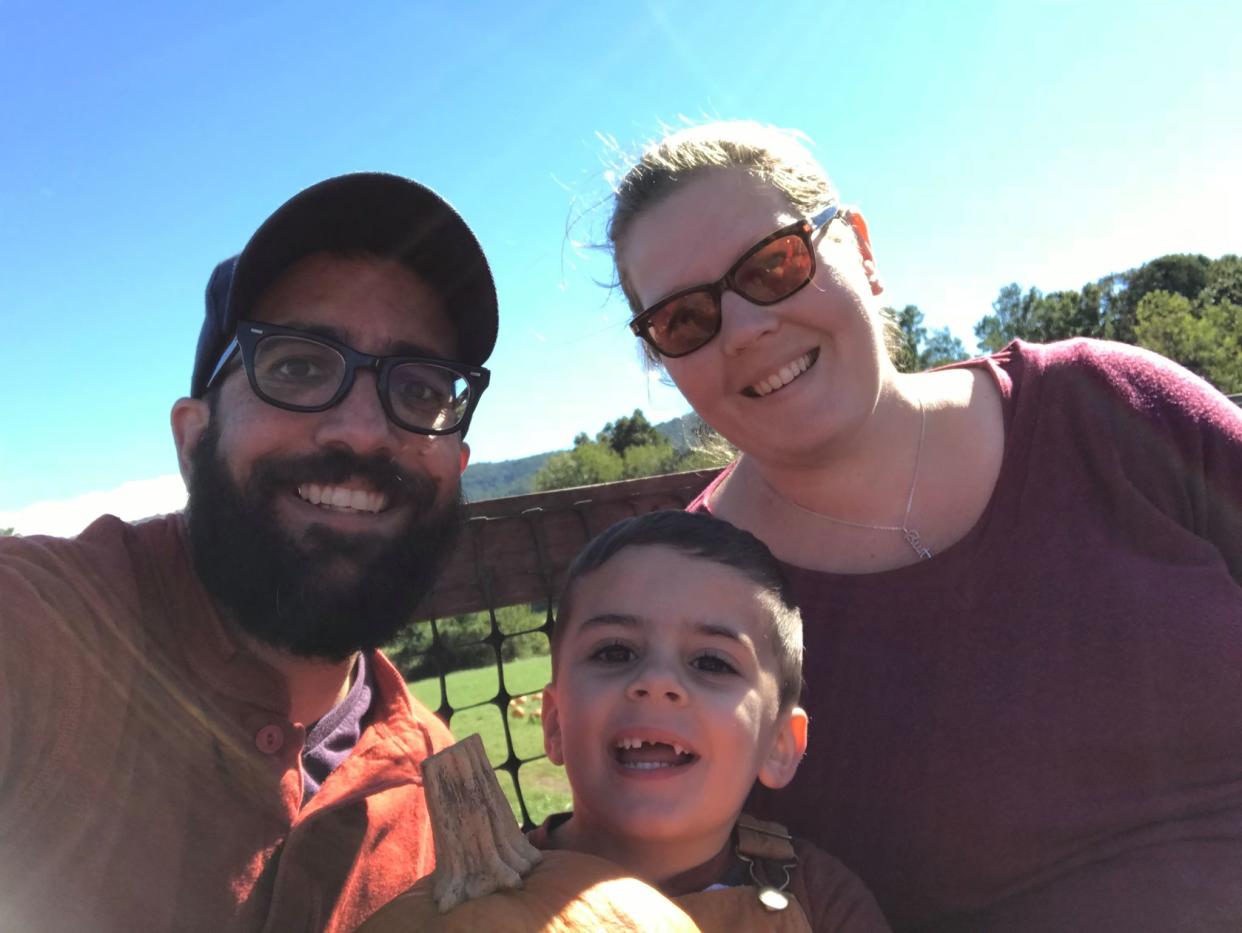Transgender dad used IVF to conceive his son: 'We were really lucky'

A transgender father who used his own egg to conceive his 4-year-old son is opening up about his long path to parenthood.
Seth and Leah Marlow, of Roanoke, Va., welcomed little Arlo four years ago using reciprocal in vitro fertilization — with Seth’s egg combined with donor sperm to make an embryo that was then carried to term by Leah.
Although Seth transitioned in 2003, underwent a double mastectomy in 2005, and takes weekly testosterone shots, he kept his ovaries, in part, to one day start a family.
However, in order to donate an egg, Seth had to re-start menstruation (which had ceased), stop taking testosterone, and use medication to stimulate the ovaries for a period of time that was “awful” and uncomfortable. “I didn’t feel like myself — like I was walking in the wrong pair of shoes,” the 41-year-old technology trainer tells Yahoo Lifestyle. “Still, you have to put on those shoes and walk out into the world.”
After IVF, the couple decided to freeze their embryo for three years to allow Seth adequate time to re-start his testosterone and recover from an exhausting battle with their insurance company, which ultimately denied coverage (with the exception of Leah’s pre-natal care).
Seth had requested fertility preservation coverage, which, according to the National Institutes of Health (NIH), allows patients to save their eggs and sperm before undergoing treatment for medical conditions such as cancer. Seth argued that testosterone injections for his gender dysphoria diagnosis could ultimately impair his fertility, however, his insurance company denied coverage and appeals to the State Department of Health in Massachusetts (the state where Seth’s company was based) failed, as well.
Gender dysphoria, as defined by the American Psychiatric Association, “involves a conflict between a person's physical or assigned gender and the gender with which he/she/they identify. People with gender dysphoria may be very uncomfortable with the gender they were assigned, sometimes described as being uncomfortable with their body (particularly developments during puberty) or being uncomfortable with the expected roles of their assigned gender.”
The term was recently eliminated from the mental health category by the International Classification of Diseases (ICD) says Dana Bevin, Ph.D., a research psychologist in Georgia. Long before that, the Diagnostic and Statistical Manual of Mental Disorders (DSM) replaced the term “gender identity disorder” with “gender dysphoria” to help eradicate mental health stigmas.
“The idea was to give gender dysphoria a medical diagnosis and de-pathologize the term,” Bevin tells Yahoo Lifestyle, adding that fertility preservation should be a covered service, according to the the World Professional Association for Transgender Health (WPATH), a global organization that sets standards of care for medical and mental-health treatments.
The Marlows always remained focused on their dream, with Seth recently telling Andrea Syrtash, the founder of the online magazine Pregnantish and the podcast of the same name, “I kept going because I had a very clear guidance for myself, which we adopted mutually. For me, I knew that I could only do it one time and that was it...you hear people going through this all the time and they’ll say it’s all worth it when you have a healthy baby. I knew that we might not get any baby and that I needed for it to be worth it to me regardless of what happened.”
Seth added, “And so I viewed it as an opportunity to maybe have a child with my wife and that opportunity had to be enough. We were really lucky. We have a beautiful child, but I couldn’t set the goal.”
The couple cashed out their retirement funds and went into debt to pay for the procedures, which totaled an estimated $30K, counting fertilization, freezing, two transfers, medication, storage fees, travel time and lost work wages.
“I’m so grateful to my wife, who has never made me feel that I had some sort of shortcoming,” Seth tells Yahoo Lifestyle. “She approached this like any other life challenge.”
And Arlo, who was born in 2015, understands his birth story. “He knows not every family is formed this way — that what’s true about one person or most people isn’t true for everyone,” Seth explains. “I recently asked Arlo how he felt about a sibling and he asked, ‘Will we use the same donor and egg?’”
Seth adds, “We give him space to feel however he feels about it.”
Related Video: Follow This Same-Sex Couple’s Incredible IVF Journey
Read more from Yahoo Lifestyle:
Transgender woman forced to remove makeup for driver's license photo: 'I was sobbing'
Texas mom and dad locked in battle over child’s gender identity: What happens when parents disagree?
Founder Gwendolyn Ann Smith on the 20th Anniversary of Transgender Day of Remembrance
Follow us on Instagram, Facebook, Twitter and Pinterest for nonstop inspiration delivered fresh to your feed, every day.
